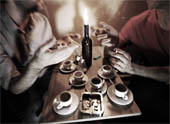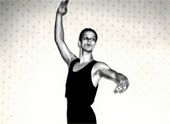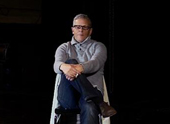PROJECTS
> Documentation 2013

Le Sacre du Printemps by Mary Wigman
Henrietta Horn’s reconstruction of Mary Wigman’s 1957 version of The Rite of Spring was enthusiastically received by critics.
The Triadic Ballet
20 years after the death of Gerhard Bohner, and 70 years after the death of Oskar Schlemmer, the Academy of the Arts reconstructed the Bauhaus ballet in co-operation with the Bavarian State Ballet II.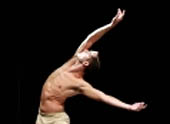
Wind von West (Cantata)
The first part of the three-part Stravinsky evening Frühlingsopfer (Rite of Spring), Wind Von West was reconstructed with dancers from the Folkwang University of the Arts and the Julliard School in New York.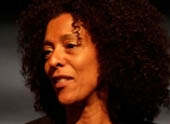
The Live Legacy Project
Angela Guerreiro investigated the connections between German contemporary dance and the Judson Dance Theatre in New York. Dancers, choreographers, students, teachers and experts came together for the six-day symposium.
Loops and Lines
The ballet company of the Hessian State Theatre of Wiesbaden, in co-operation with Ensemble Modern, demonstrated the importance of Laban’s Movement Study for dance today.
Der Schrank der Georgi (GEORGI’S WARDROBE)
Yvonne Georgi was one of the most important expressionist dance choreographers. Ricardo Fernando and his ensemble used a recording to reconstruct her choreography Glück, Tod und Traum.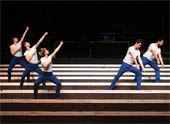
Revolution won't be performed
Using the Communist choreographer Jean Weidt as its staring point, the project took a critical look at the most recent revolutions in Europe.
Tracing Isadora
The ballet company of the Nationaltheater Mannheim dedicated itself to Isadora Duncan, a pioneer of modern dance. A series of events was developed based on Duncan’s 1907 performance in the city.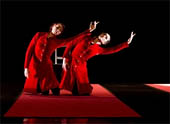
The Horta Project – SOAP Recreation
In the 1990s, dance in the German state of Hesse and the country as a whole was heavily influenced by Rui Horta and his company SOAP. Tanzcompagnie Gießen restaged two of Horta’s works with Horta himself as director.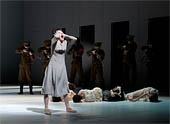
Anastasia/Shadow
The ballet company of the Saarland State Theatre reconstructed Anastasia by Sir Kenneth MacMillan and contrasted it with a new piece, Shadow.
undo, redo and repeat
Choreographers Christina Ciupke and Anna Till looked at how information about past dances by Mary Wigman, Kurt Jooss, Dore Hoyer, Pina Bausch and William Forsythe has reached us today.
Anita Berber – Retro/Perspective
Scandal is the reason most people know about this 1920s dance icon, but Anita Berber was also an international star with great ability. This festival by and with MS Schrittmacher was dedicated to Berber as a dancer.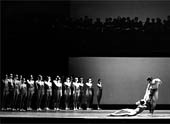
PAX 2013
Leipzig Ballett restaged Uwe Scholz's 1992 choreography Pax Questuosa, which looks at the socio-political situation in the world and in reunified Germany post-Cold War.
Tausend Grüsse
Under the direction of Steffen Fuchs, Ballett Koblenz restaged two choreographies by Uwe Scholz – Dans la Marche and Die 1000 Grüße. Fuchs rounded off the evening with a homage to Scholz.
Julius Hans Spiegel Centre
How has colonialism influenced German dance? Work with choreographers from three continents produced formats and performances that continued and rewrote this forgotten chapter of German dance history.
The Memory Machine
MOUVOIR’s walk-in installation The Memory Machine used contemporary witness reports to bring dance history between 1980 and 2000, a period marked by new concepts and styles, to life.![Thumbnail No [’rait] of spring](https://tanzfonds.de/en/wp-content/uploads/sites/3/2015/08/no-rait-of-spring_thumb.jpg)
No [’rait] of spring
Based on his own experience as a dancer in Pina Bausch’s Le Sacre du Printemps, Josep Caballero García looked at five key female roles in German dance history from the perspective of male dancers.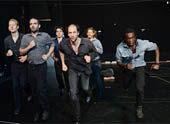
Ruhr-Ort
In 1991, Susanne Linke created a choreography based on the work of men in steel factories and coalmines. In 2014, she restaged the piece with dancers from the Renegade ensemble.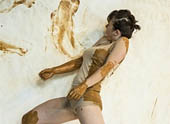
MONTE VERITÀ – INTERPRETATIONS OF SPACE
Juliette Villemin investigated the search for new terms of reference between the body and space in modern dance at the beginning of the 20th century.